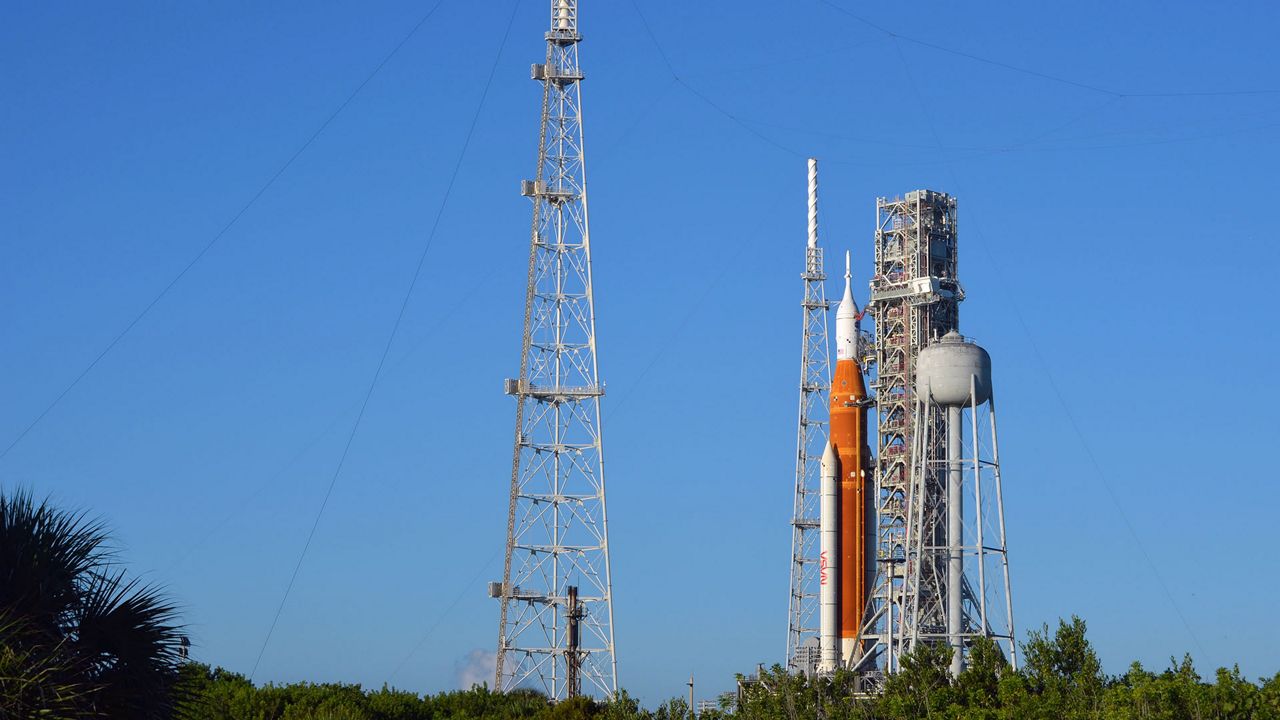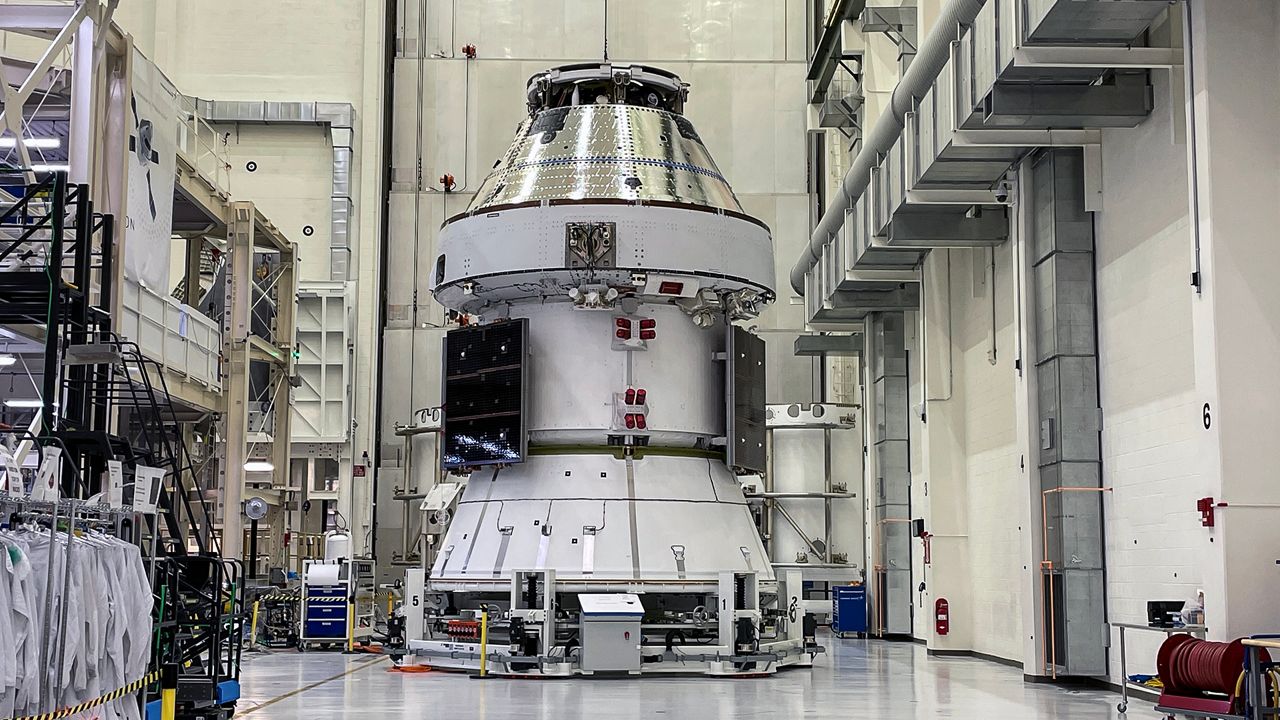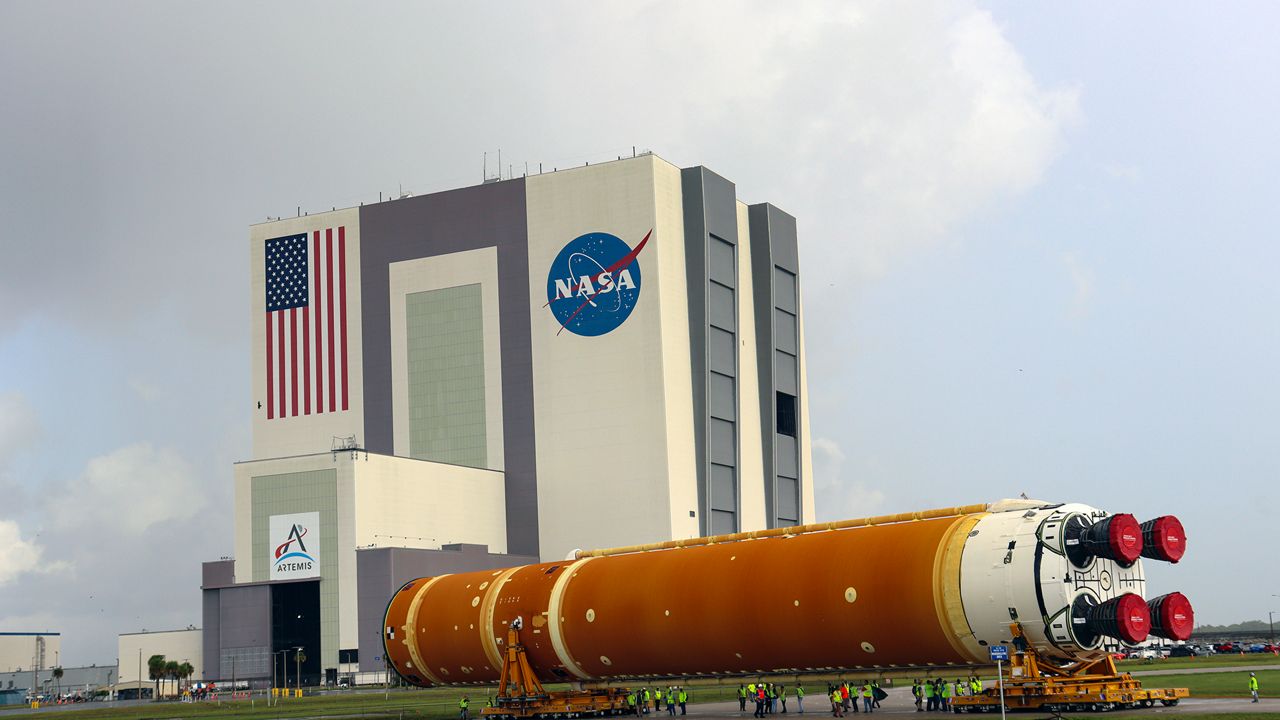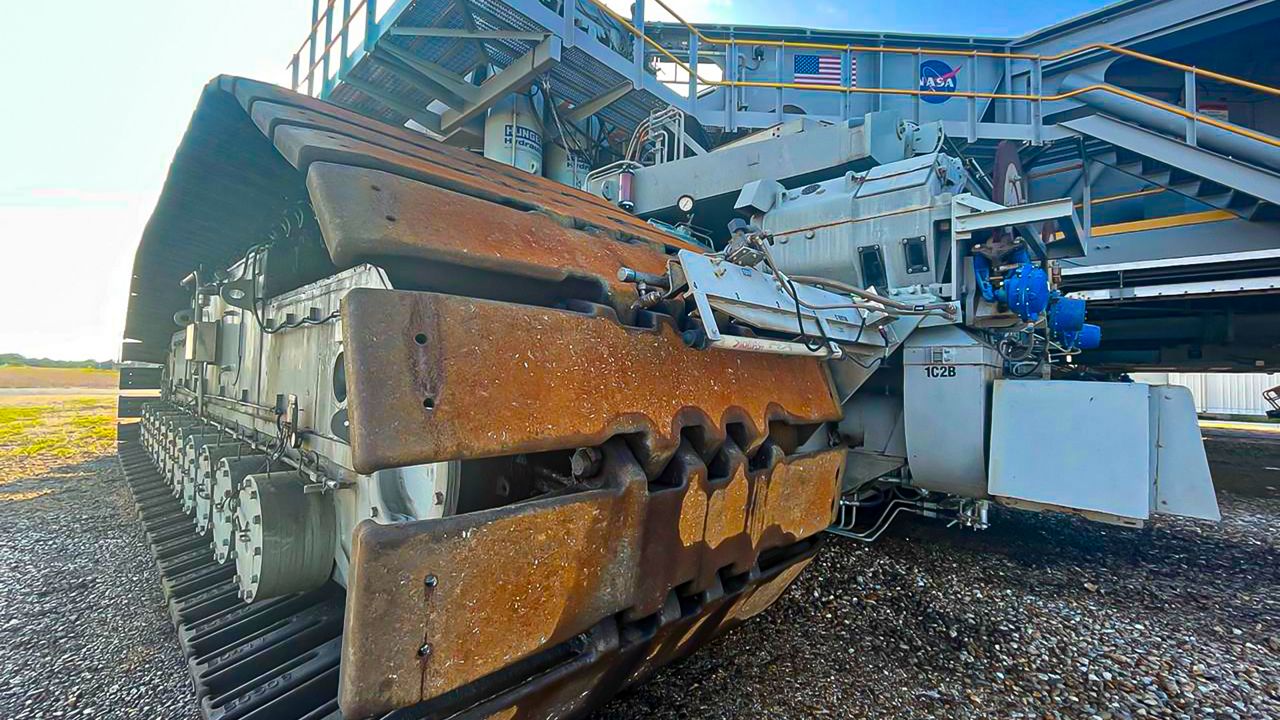KENNEDY SPACE CENTER — During the cryogenic demonstration test of the Artemis I’s Space Launch System rocket, teams discovered another liquid hydrogen leak, NASA confirmed on Wednesday, but the launch director said she is pleased with how things went.
What You Need To Know
- The leak is in the same location of the rocket as the previous leak
- Launch Director Charlie Blackwell-Thompson said she thought the test went well
- NASA is also seeking a waiver for a battery check of the rocket’s flight termination system
- RELATED coverage: NASA plans to test Artemis seal repairs this week
At around 10:05 a.m. EDT, NASA’s liquid hydrogen team reported that a leak was detected at the tail service mask umbilical, the same area of the rocket that forced the scrub of the second Artemis I launch attempt on Saturday, Sept. 3., stated Dorrol Nail of NASA’s communications during a webcast of the test.
The team discovered a 7% reading of liquid hydrogen leaking in that area of the quick disconnect line, which was repaired recently.
“It showed the same signature as the previous leak. It happened at the same moment that the superchill liquid hydrogen was transitioning from slow fill to fast through those very lines … coming from the tail service mask umbilical going into the rocket” Nail described.
The area has an 8-inch quick disconnect line that is an umbilical that is used to feed the liquid hydrogen from storage tanks into the rocket’s core stage.
Since the second launch attempt, NASA officials said that engineers replaced two seals: “one surrounding the 8-inch line used to fill and drain liquid hydrogen from the core stage, and another surrounding the 4-inch bleed line used to redirect some of the propellant during tanking operations.”
During the test on Wednesday, Nail said the system automatically went into a stop flow to prevent any more fuel to run. He said that Launch Director Charlie Blackwell-Thompson signed off on a plan to warm up the line and then reinitialize the flowing of the propellant back into the rocket.
“The team recommended and the launch director approved a troubleshooting plan to try and seal the leak on the liquid hydrogen side,” Nail said in an update.
Nail described that the team purged the liquid hydrogen line to warm it up.
"The hope is that the warming up the line allows the seal where they believe there's a leak to kind of reset against the quick disconnect," he said.
Once that is done, the team will then begin to flow the liquid hydrogen back into the rocket, he said.
During an 11:36 a.m. EDT update, Nail confirmed that the team is in a liquid hydrogen fast fill.
"This after a troubleshooting plan was put into play to try and real a leak around an 8-inch hydrogen fuel line that developed after the previous transition from slow-fill to fast-fill. So again, currently, we are now in fast fill on the hydrogen line," he said.
During an 11:46 a.m. EDT update, Nail said that Blackwell-Thompson approved a contingency plan that is in place. If the leak reaches more than 10% concentration of the liquid hydrogen inside the cavity for more than five minutes, engineers will gather information on the pressure-assisted seal to see how it is performing.
"This plan is all in the name of gathering data about this seal," Nail explained.
Eventually, liquid hydrogen was completely filled and the leak got to the point where engineers were able to manage it better, Nail said in an update at 2:03 p.m EDT.
The launch team then successfully loaded the Space Launch System Interim Cryogenic Propulsion Stage (the engine that will send the Orion capsule) to the moon with liquid hydrogen and liquid oxygen.
Once done, the team proceeded with a pre-pressurization test that pressurized the tank by closing the vent on the liquid hydrogen side to prevent the boil-off gas from escaping.
According to NASA, engineers were happy with the readings for the pre-pressurization test, which also include the pressure and temperature levels.
‘Test went really well’
As both the day and the cryogenic demonstration test wrapped up, the launch director said she was pleased with how things went.
“Well, I think the test went really well. We went into this test. We wanted to learn,” said Blackwell-Thompson during a live webcast.
She said the new fuel-loading procedure worked out as the engineering and liquid hydrogen teams monitored temperatures and pressures as propellants were loaded.
And it was the “kinder, gentler” plan that helped deal with the unexpected leak, she said.
“We did notice as the pressure came up that we did see a leak in the plate cavity at the 8-inch (quick disconnect). We went through our pre-plan we have utilized it a couple of times where we stopped flow and allow it to warm up and then we re-initiated it,” Blackwell-Thompson described.
As far as the tentative launch of Tuesday, Sept. 27, Blackwell-Thompson only said that NASA would go over the data first before she could comment on a possible liftoff.
“Well, I think we’ll take the data and we’ll go see what it tells us. I am extremely encouraged by the test today, getting through all the objectives …,” she said.
The reason for the test
The purpose of Wednesday’s test is to pour 730,000 gallons of propellant to test the two seals that were replaced after a liquid hydrogen leak scrubbed the second launch attempt.
NASA started loading the supercold fuel at around 7 a.m.
Fueling the rocket has proved difficult for the launch teams that had to scrub liftoff attempts twice due to leaks on the liquid hydrogen side of tanking operations.
Just after 12 p.m., NASA conducted a kick-start bleed test during which some of the liquid hydrogen is used to cool the rocket’s four RS-25 engines, where temperatures drop to minus 423 degrees Fahrenheit.
During both launch attempts, issues plagued the Artemis I mission. The first attempt in August saw a liquid hydrogen leak and temperature issues with the engines.
Then in the second launch attempt in early September, two seals were damaged, causing a different liquid hydrogen leak.
NASA is also seeking a waiver for a battery check of the rocket’s flight termination system from Space Launch Delta 45.
The existing agreement only allowed a 25-day window to launch, however, NASA rolled out from the Vehicle Assembly Building on Aug. 16 to Launch Pad 39B at the Kennedy Space Center.
If approved to launch on the new target date of Sept. 27, it would be 42 days since the abort system batteries were checked, nearly double the time the agreement allowed.








